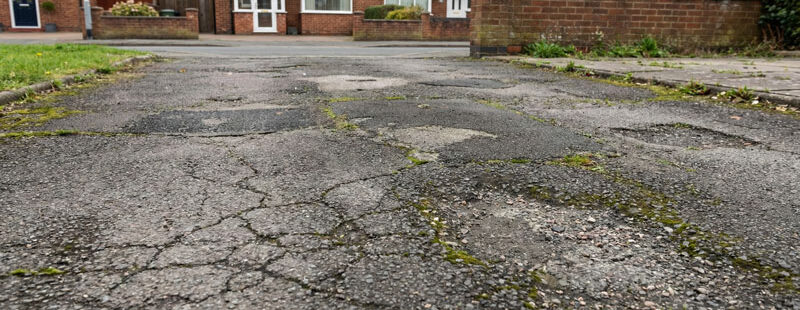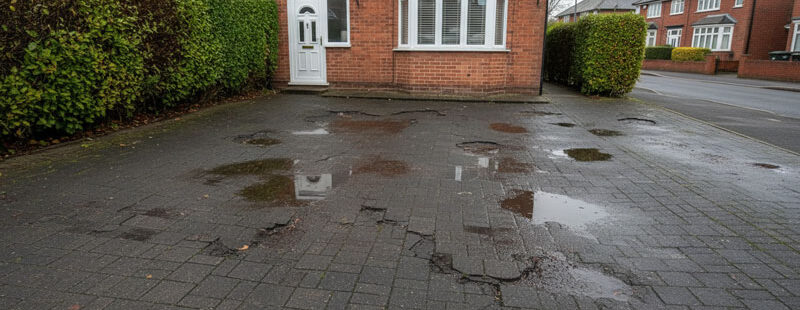
- min min
- No Comments
- August 5, 2025
How Road Surface Quality Impacts Traffic Flow and Public Safety
When people talk about improving road safety or reducing traffic delays, they often focus on speed limits, signage, or road layouts. But one of the most overlooked factors in both safety and traffic efficiency is road surface quality.
The condition of a road has a direct impact on how vehicles move, how drivers react, and how safe the environment is for everyone—from motorists to cyclists to pedestrians. In this blog, we’ll explore why road surface quality matters and what poor conditions could mean for your community or business.
1. Poor Surface Conditions Increase Accident Risk
Worn or uneven surfaces contribute to a higher number of road accidents. Here’s how:
- Potholes and cracks can cause tyre damage or force drivers to swerve unexpectedly.
- Uneven surfaces affect braking distance, especially in wet conditions.
- Loose debris or crumbling edges pose a hazard to cyclists and motorcyclists.
Quality surfacing ensures proper skid resistance and traction, which are essential for safe driving—especially at high speeds or in bad weather.
2. Slows Down Traffic and Causes Congestion
When roads are full of defects, drivers naturally slow down, and traffic flow suffers. This leads to:
- Bottlenecks and longer journey times
- Increased fuel consumption and emissions
- More road rage and driver frustration
In contrast, well-maintained surfaces encourage smoother, faster, and more predictable driving behaviour—key ingredients for efficient traffic movement.
3. Impacts Emergency Response Times
In emergencies, every second counts. Emergency vehicles like ambulances and fire engines need smooth, obstruction-free surfaces to reach their destinations quickly.
Potholes, flooded areas, or uneven roads can delay response times, putting lives at risk. Ensuring roads are surfaced to a high standard is a critical part of public safety infrastructure.
4. Deteriorates Faster Without Preventative Maintenance
Without routine upkeep, small imperfections quickly grow into major structural problems. Investing in high-quality materials and professional surfacing techniques from the beginning helps prevent:
- Frequent road closures
- Disruption to local businesses
- The need for complete resurfacing within just a few years
This is why local councils, property developers, and facility managers trust teams like East Herts Surfacing to deliver roads that last and perform.
5. Affects Road Markings and Signage Visibility
Even the best line markings and signage are useless if the road beneath them is damaged or degraded. Faded paint or distorted symbols can lead to:
- Lane confusion
- Missed crossings or cycle paths
- Reduced compliance with traffic controls
A smooth, even surface is essential for crisp, visible markings that guide drivers safely.
6. Impacts Cyclists and Pedestrians Too
It’s not just vehicles that suffer from poor road surfaces. Cyclists are particularly vulnerable to cracks, debris, and potholes, which can throw them off balance or damage their wheels.
Similarly, crumbling kerbs and uneven footpaths create trip hazards for pedestrians, especially the elderly or disabled.
7. Long-Term Value and Public Confidence
Well-maintained roads reflect positively on local authorities, property managers, and developers. They show a commitment to public safety, infrastructure quality, and economic efficiency.
Poor surfaces, on the other hand, lead to complaints, legal claims, and damage to public trust.
Looking to Improve Road Safety and Flow?
At East Herts Surfacing, we don’t just lay tarmac—we help build safer, smoother, more reliable roads that support traffic efficiency and public wellbeing. Whether you’re resurfacing a private road, car park, or pathway, our services ensure lasting results.
👉 Explore our full range of professional solutions on the Our Services page.





